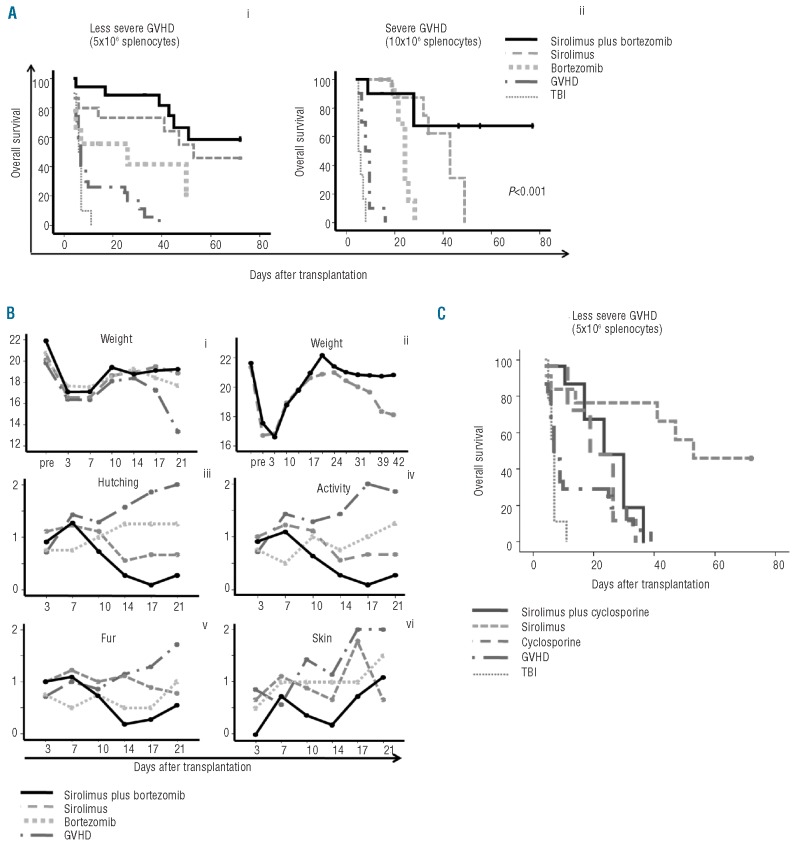Figure 5.
GVHD mouse model. (A) Kaplan-Meier curves representing overall survival of mice after a dose of 5×106 (i) or 10×106 splenocytes (ii) treated with or without sirolimus at a dose of 0.25 mg/kg, intraperitoneally, for 14 days, bortezomib at a dose of 1 μg intravenously on Days 0, +1, +2 post-transplant, or the combination of the two drugs. Control groups receiving only splenocytes without any additional drug to prevent GVHD (so called “GVHD” group), or receiving irradiation without stem cell support (“TBI” group) are shown. Control mice receiving BM without splenocytes survived until the end of the experiment. (B) Evolution of weight loss up to Day 21 (i) or up to Day 42 after transplant (ii), hunching (iii), activity (iv), fur texture (v) and skin integrity (vi) among mice receiving a dose of 5×106 splenocytes, with or without the drugs. GvHD score was not blind. (C) Kaplan-Meier curves representing overall survival in mice receiving a dose of 5×106 splenocytes, with or without sirolimus, cyclosporine or their combinations. The group receiving only sirolimus had the best outcome, so no beneficial effect was observed upon using the combination. The group of mice receiving BM without splenocytes survived until the end of the experiment (> 60 days post-infusion). Five mice per group were included in each experiment. Data from at least 2 experiments are shown.

